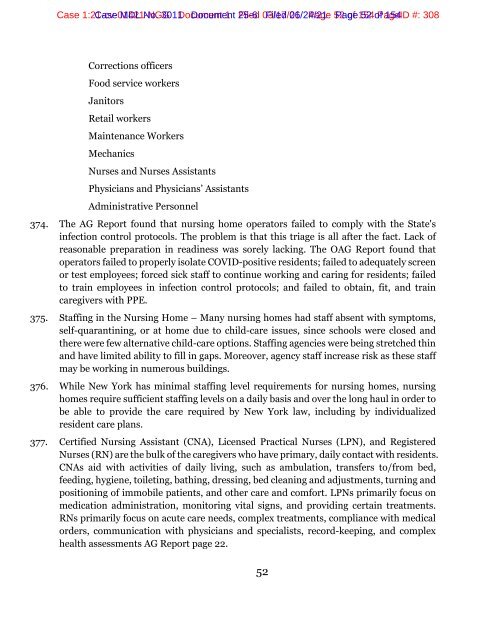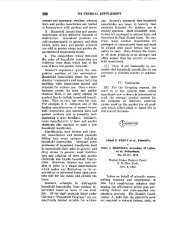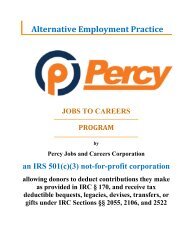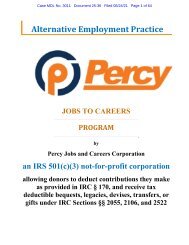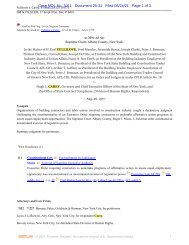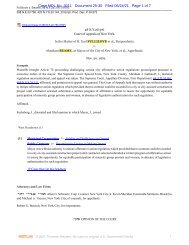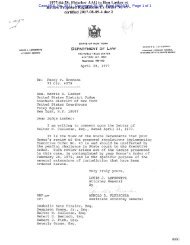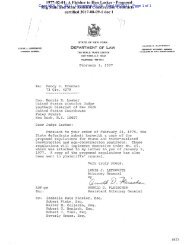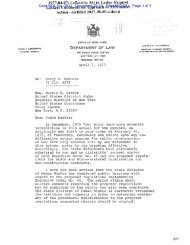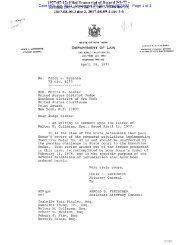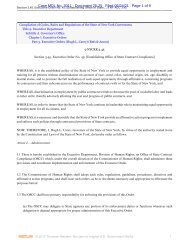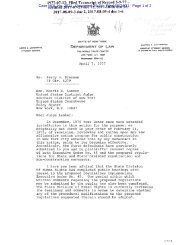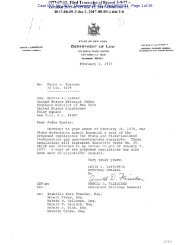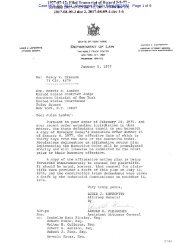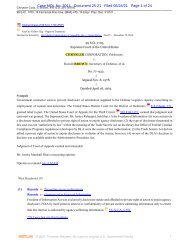Attachment 6 EDNY Hodge v Cuomo 21-cv-01421 Complaint
Create successful ePaper yourself
Turn your PDF publications into a flip-book with our unique Google optimized e-Paper software.
Case 1:<strong>21</strong>-<strong>cv</strong>-014<strong>21</strong>-NGG Case MDL No. 3011 Document 1 25-6 Filed 03/17/<strong>21</strong> Filed 06/24/<strong>21</strong> Page 52 Page of 154 52 of PageID 154 #: 308<br />
Corrections officers<br />
Food service workers<br />
Janitors<br />
Retail workers<br />
Maintenance Workers<br />
Mechanics<br />
Nurses and Nurses Assistants<br />
Physicians and Physicians’ Assistants<br />
Administrative Personnel<br />
374. The AG Report found that nursing home operators failed to comply with the State's<br />
infection control protocols. The problem is that this triage is all after the fact. Lack of<br />
reasonable preparation in readiness was sorely lacking. The OAG Report found that<br />
operators failed to properly isolate COVID-positive residents; failed to adequately screen<br />
or test employees; forced sick staff to continue working and caring for residents; failed<br />
to train employees in infection control protocols; and failed to obtain, fit, and train<br />
caregivers with PPE.<br />
375. Staffing in the Nursing Home – Many nursing homes had staff absent with symptoms,<br />
self-quarantining, or at home due to child-care issues, since schools were closed and<br />
there were few alternative child-care options. Staffing agencies were being stretched thin<br />
and have limited ability to fill in gaps. Moreover, agency staff increase risk as these staff<br />
may be working in numerous buildings.<br />
376. While New York has minimal staffing level requirements for nursing homes, nursing<br />
homes require sufficient staffing levels on a daily basis and over the long haul in order to<br />
be able to provide the care required by New York law, including by individualized<br />
resident care plans.<br />
377. Certified Nursing Assistant (CNA), Licensed Practical Nurses (LPN), and Registered<br />
Nurses (RN) are the bulk of the caregivers who have primary, daily contact with residents.<br />
CNAs aid with activities of daily living, such as ambulation, transfers to/from bed,<br />
feeding, hygiene, toileting, bathing, dressing, bed cleaning and adjustments, turning and<br />
positioning of immobile patients, and other care and comfort. LPNs primarily focus on<br />
medication administration, monitoring vital signs, and providing certain treatments.<br />
RNs primarily focus on acute care needs, complex treatments, compliance with medical<br />
orders, communication with physicians and specialists, record-keeping, and complex<br />
health assessments AG Report page 22.<br />
52


